Welcome to the Zone 7b Planting Guide! This comprehensive resource helps gardeners thrive in USDA Hardiness Zone 7b, offering insights into planting, growing, and caring for plants tailored to the region’s moderate climate and long growing season. Perfect for both beginners and experienced gardeners, this guide provides essential tips and schedules to ensure a vibrant and successful garden year-round.
1.1 Understanding USDA Hardiness Zone 7b
USDA Hardiness Zone 7b is one of 13 zones defined by the U.S. Department of Agriculture, indicating the average annual extreme minimum temperature. Zone 7b has temperatures ranging from 5°F to 10°F (-15°C to -12°C), making it suitable for plants that can tolerate moderate winters. This zone spans 28 states, offering a long growing season ideal for diverse gardening. Understanding Zone 7b helps gardeners select plants adapted to its climate, ensuring successful growth and survival. The USDA map is a vital tool for gardeners, providing localized planting guidance and helping them make informed decisions for their specific region.
1.2 Importance of Planting Guides for Zone 7b
Planting guides are essential for Zone 7b gardeners, as they provide tailored advice for the region’s unique climate and growing season. These guides help gardeners choose the right plants, avoid frost damage, and optimize growth. By following a Zone 7b planting guide, gardeners can maximize their yield, reduce crop failures, and enjoy a thriving garden year-round. The guide also considers local soil conditions, temperature fluctuations, and moisture levels, offering a personalized approach to gardening success. Whether you’re growing vegetables, flowers, or herbs, a planting guide ensures you’re planting at the right time, making it a crucial tool for every gardener in Zone 7b.
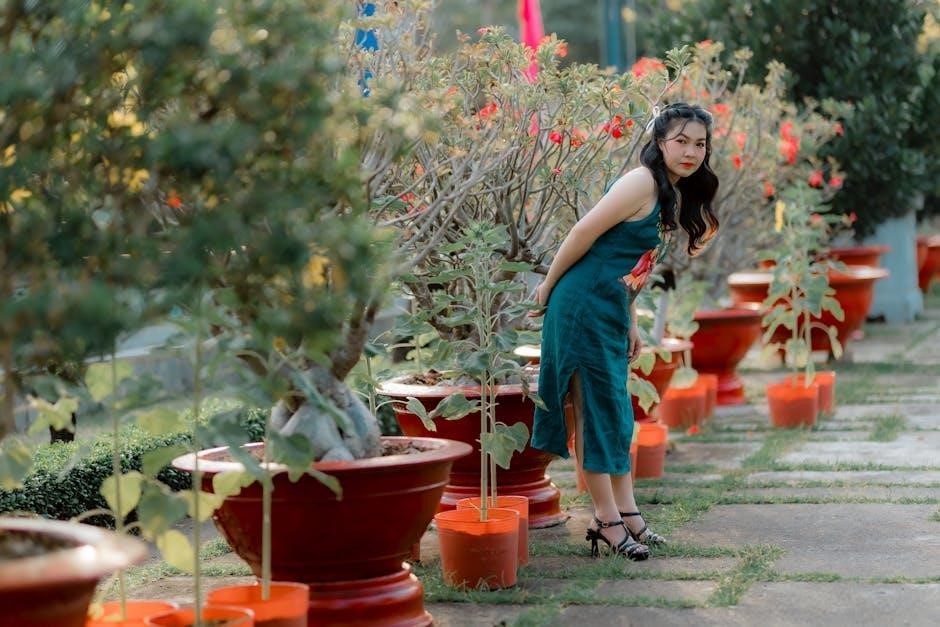
Key Elements of the Zone 7b Planting Guide
The guide covers frost dates, growing seasons, climate, soil conditions, and optimal planting times, ensuring gardeners can make informed decisions for a thriving garden in Zone 7b.
2.1 Frost Dates and Growing Season
In Zone 7b, frost dates are crucial for determining planting schedules. The last spring frost typically occurs around late March to early April, while the first fall frost happens in mid to late October. This creates a long growing season of approximately 220-250 days, allowing gardeners to enjoy both spring and fall gardens. Understanding these dates is essential for planting vegetables, flowers, and herbs at the right time to avoid damage from frost. The extended growing season in Zone 7b offers ample opportunities for multiple harvests, making it ideal for a wide variety of plants.
2.2 Climate and Soil Conditions in Zone 7b
Zone 7b is characterized by a moderate climate with warm summers and mild winters, making it ideal for a wide range of plants. The average annual extreme minimum temperature ranges from 5°F to 10°F (-15°C to -12°C), influencing plant selection. Soil conditions vary, but well-draining, fertile soils with a pH between 6.0 and 7.0 are optimal for most plants. The region’s moderate humidity and rainfall support healthy plant growth, though droughts can occur. Understanding the local soil composition and climate patterns helps gardeners choose appropriate plants and implement effective care strategies, ensuring a thriving garden tailored to Zone 7b’s unique conditions.
Optimal Planting Times in Zone 7b
Zone 7b offers a long growing season, allowing for spring, summer, and fall gardens. Timing plantings according to frost dates ensures maximum growth and productivity throughout the year.
3.1 Spring Planting Schedule
In Zone 7b, spring planting typically begins in late February to early March, after the last frost date. Cool-season crops like broccoli, spinach, and lettuce thrive during this period. Plant seeds for vegetables such as carrots, radishes, and peas as soon as the soil can be worked. Early spring is also ideal for planting onion sets and potatoes. For flowers, pansies and violas can be planted in early spring, while warm-season annuals like tomatoes and peppers should be started indoors 4-6 weeks before the last frost date. Proper soil preparation and timely planting ensure a strong start to the growing season.
3.2 Summer Planting Schedule
Zone 7b’s warm summers make it ideal for planting heat-loving crops. Start by setting out tomatoes, peppers, and eggplants after the last frost date. Direct sow beans, corn, and squash in late spring for a summer harvest. Okra, southern peas, and sweet potatoes also thrive in Zone 7b’s climate. Ensure soil is warm and well-drained, with full sun for optimal growth. Proper watering and mulching are crucial to retain moisture and suppress weeds. This schedule allows gardeners to maximize the growing season, enjoying a bountiful summer harvest.
3.3 Fall Planting Schedule
Zone 7b’s fall planting schedule offers a second chance for a bountiful harvest. Start by planting cool-season crops like broccoli, kale, and spinach 8 weeks before the first frost date. Root vegetables such as carrots, beets, and radishes thrive in Zone 7b’s mild autumn weather. Plant these 8–10 weeks before the first frost for optimal growth. Greens like lettuce and arugula can be direct-sown 6–8 weeks before frost. Ensure soil is well-draining and receives full sun. Fall gardens benefit from succession planting, allowing multiple harvests. Make the most of Zone 7b’s extended growing season with these fall planting strategies.
3.4 Winter Planting Schedule
Zone 7b’s moderate winters allow for selective winter planting. Hardy crops like spinach, kale, and Brussels sprouts can be planted in late fall or early winter, tolerating light frosts. Plant these 8–10 weeks before the first frost date to ensure maturity. Root vegetables such as radishes and turnips can also be direct-sown in late fall. Protect plants with mulch or cold frames to extend the growing season. Zone 7b’s climate supports year-round gardening with proper planning and protection. Take advantage of the cooler months to grow resilient crops and enjoy fresh produce even in winter.
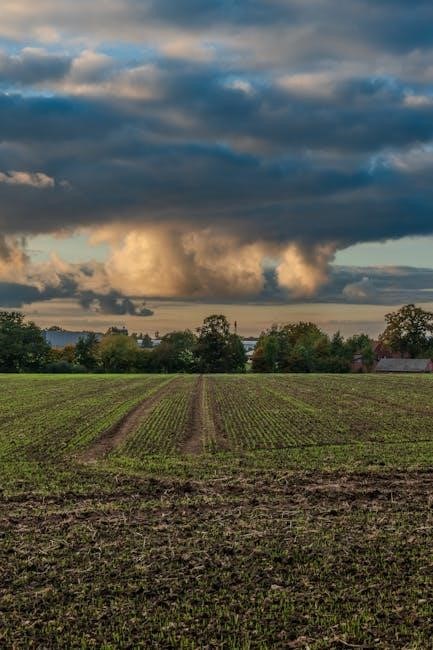
Best Vegetables for Zone 7b
Zone 7b supports a wide variety of vegetables, including cool-season crops like spinach, kale, and carrots, as well as warm-season favorites such as tomatoes, peppers, and cucumbers.
4.1 Cool-Season Vegetables
Cool-season vegetables thrive in Zone 7b’s moderate spring and fall temperatures. Ideal crops include broccoli, spinach, kale, carrots, and radishes. These plants prefer cooler weather and can tolerate light frosts. Plant them in early spring, about 4-6 weeks before the last frost date, or in late summer for a fall harvest. For crops like broccoli and Brussels sprouts, start seeds indoors 6-8 weeks before the first frost for a robust fall harvest. Zone 7b’s long growing season allows for two plantings of many cool-season vegetables, maximizing your garden’s productivity and diversity throughout the year.
4.2 Warm-Season Vegetables
Warm-season vegetables flourish in Zone 7b’s summer heat, thriving in temperatures above 65°F. Popular choices include tomatoes, peppers, cucumbers, squash, and eggplants. These crops prefer well-drained soil and full sun. Plant seeds or seedlings after the last frost date, typically in late April or early May. For tomatoes and peppers, start indoors 6-8 weeks before transplanting. Cucumbers and squash can be direct-sown when soil warms to at least 60°F. Zone 7b’s long growing season allows for multiple harvests of warm-season crops. Proper spacing and consistent watering are key to maximizing yields and preventing disease. Plan your planting schedule to enjoy a bountiful summer harvest.
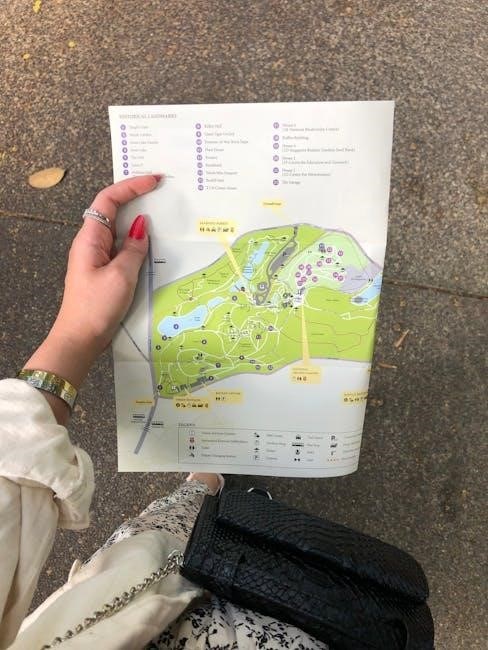
Best Flowers for Zone 7b
Zone 7b offers ideal conditions for a wide variety of flowers, including both annuals and perennials. Popular choices like marigolds, zinnias, roses, and coneflowers thrive in its moderate climate, ensuring vibrant blooms throughout the growing season.
5.1 Annual Flowers
Annual flowers are a fantastic choice for Zone 7b gardens, offering vibrant colors and quick growth. Popular options include marigolds, zinnias, petunias, and sunflowers, which thrive in the region’s moderate climate. These flowers typically bloom from spring to fall, providing continuous beauty. Plant them after the last frost date in early spring for optimal results. Some annuals, like pansies and snapdragons, can even tolerate light frosts, extending their flowering season. With proper soil preparation and sunlight, annuals add dynamic color and texture to any garden. Their short lifespan makes them ideal for rotating designs or filling gaps between perennials.
5.2 Perennial Flowers
Perennial flowers are ideal for Zone 7b gardens, offering lasting beauty and low maintenance. Coneflowers, black-eyed Susans, and daylilies are popular choices, thriving in the region’s moderate climate. These flowers return year after year, providing vibrant blooms from spring to fall. Hydrangeas and peonies also excel, adding elegance to landscapes. Plant perennials in well-draining soil with adequate sunlight for optimal growth. Many perennials tolerate Zone 7b’s cold winters, making them a reliable choice. With proper care, they create stunning displays and attract pollinators. Their resilience and beauty make perennials a cornerstone of any thriving Zone 7b garden, ensuring color and life for seasons to come.
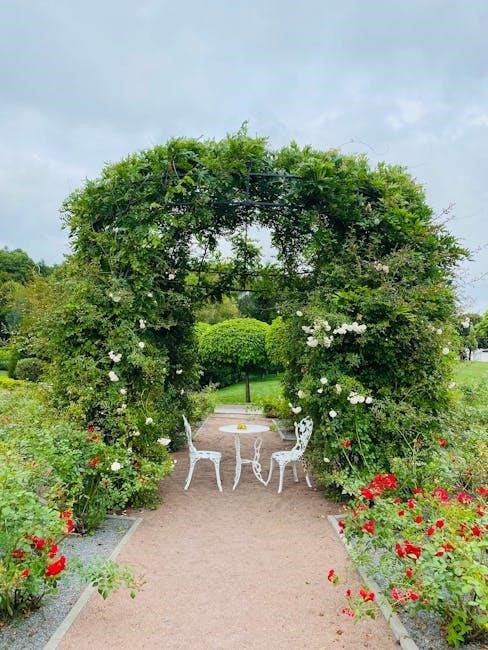
Best Herbs for Zone 7b
Zone 7b is ideal for growing a variety of herbs, including hardy options like rosemary, thyme, and oregano, as well as tender herbs like basil and mint; These plants thrive in the region’s moderate climate, offering fresh flavors and fragrance to enhance culinary dishes. Proper soil preparation and sunlight ensure robust growth, making herbs a delightful addition to any Zone 7b garden.
6.1 Hardy Herbs
Hardy herbs like rosemary, thyme, and oregano thrive in Zone 7b’s moderate climate. These perennials tolerate light frosts and require minimal care, making them ideal for year-round growth. Plant them in well-drained soil with full sun for robust flavor and fragrance. Prune regularly to promote healthy growth and prevent overwintering damage. Sage and lavender also excel in Zone 7b, adding beauty and culinary value to gardens. Their resilience and adaptability make hardy herbs a low-maintenance choice for gardeners seeking fresh flavors and fragrances throughout the seasons. Proper care ensures these herbs remain vibrant and productive in Zone 7b’s conditions.
6.2 Tender Herbs
Tender herbs like basil, mint, and cilantro thrive in Zone 7b’s warm seasons but are sensitive to frost. Plant these annuals after the last frost date in well-drained soil and full sun. Regular watering and fertilization promote healthy growth. Container gardening is ideal for tender herbs, allowing easy relocation during cooler months. Pinch or prune regularly to encourage bushy growth and prevent flowering. These herbs add fresh flavor to dishes and can be grown indoors during winter for year-round harvest. Proper care ensures tender herbs remain vibrant and productive in Zone 7b’s climate, offering gardeners a continuous supply of fragrant and flavorful additions to their cooking.
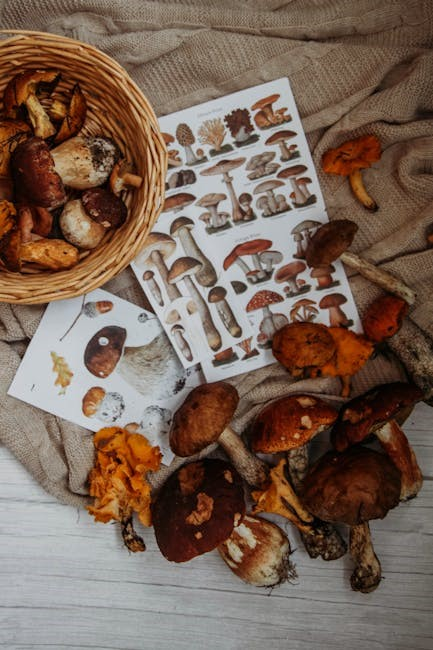
Gardening Tips for Zone 7b
Optimize Zone 7b’s long growing season by planting both cool- and warm-season crops. Use raised beds for better drainage and soil warmth. Rotate crops annually to maintain soil health and prevent pests. Incorporate companion planting to enhance growth and deter pests naturally. Monitor weather patterns and adjust planting schedules accordingly for optimal results. These strategies ensure a thriving and resilient garden in Zone 7b’s diverse climate conditions.
7.1 Soil Preparation
Soil preparation is crucial for a thriving garden in Zone 7b. Test your soil pH and adjust it based on plant requirements, as most vegetables and flowers prefer a slightly acidic to neutral soil (6.0–7.0). Incorporate organic matter like compost or well-rotted manure to improve soil structure, fertility, and drainage. Mulch around plants to retain moisture and suppress weeds. For raised beds, ensure proper aeration and drainage to prevent waterlogging. Rotate crops annually to maintain soil health and prevent nutrient depletion. These practices create a fertile foundation for optimal plant growth in Zone 7b’s climate.
7.2 Water Management
Effective water management is crucial for a thriving garden in Zone 7b. Use drip irrigation or soaker hoses to deliver water directly to plant roots, minimizing evaporation. Mulch around plants to retain soil moisture and reduce runoff. Avoid overwatering, as it can lead to root rot and nutrient leaching. Adjust watering schedules according to seasonal rainfall and temperature fluctuations. During hot summer months, increase watering frequency, while in cooler spring and fall, reduce it. Proper water management ensures healthy plant growth and maximizes water efficiency in Zone 7b’s climate.
7.3 Pest and Disease Control
Managing pests and diseases is essential for a healthy garden in Zone 7b. Regularly inspect plants for signs of damage or infection. Use organic pesticides like neem oil or insecticidal soap to control aphids, slugs, and snails. Practice crop rotation to break disease cycles and improve soil health. Maintain good air circulation by spacing plants appropriately to reduce fungal diseases. Treat fungal infections promptly with fungicides and remove infected plant material to prevent spread. Encourage beneficial insects like ladybugs and lacewings to naturally control pests. Keep the garden clean, removing weeds and debris that can harbor pests and diseases. Monitor weather conditions, as excessive moisture can lead to fungal growth. Act early to prevent infestations and infections, ensuring a resilient and thriving garden in Zone 7b.
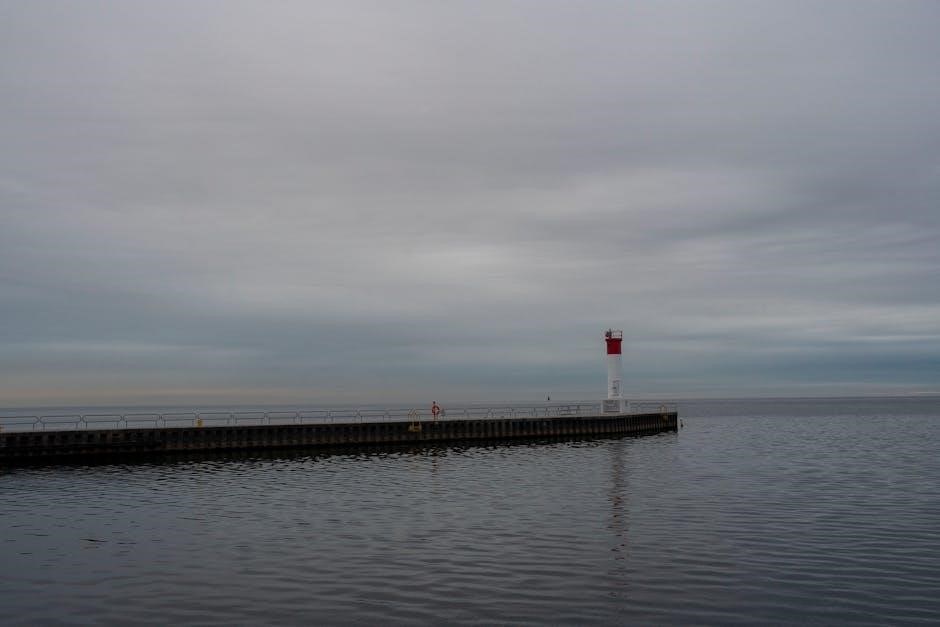
Utilizing Online Tools and Resources
Leverage online tools like planting calendars and gardening apps to maximize your Zone 7b gardening success. Utilize resources like Google Sheets for personalized garden planning and tracking.
8.1 Planting Calendars
Planting calendars are essential tools for Zone 7b gardeners, providing month-by-month guidance for optimal planting times. These calendars outline key frost dates and growing seasons, ensuring plants thrive. By following a Zone 7b-specific calendar, gardeners can time seed starting, transplanting, and harvesting with precision. Many online calendars offer detailed schedules for vegetables, flowers, and herbs, tailored to the region’s climate. For example, a Zone 7b planting calendar might recommend starting cool-season crops like broccoli in early spring or late summer for a fall harvest. Utilizing these resources helps gardeners maximize yields and avoid common mistakes. They are invaluable for both beginners and experienced growers.
8.2 Gardening Apps
Gardening apps are invaluable tools for Zone 7b gardeners, offering personalized advice and tracking features to enhance your gardening experience. These apps provide detailed planting schedules, frost date reminders, and weather forecasts tailored to your specific zone. Many apps allow you to track plant progress, set reminders for watering and fertilizing, and access databases of plants suitable for Zone 7b. Some popular apps also offer space for journaling, helping you document successes and challenges. Whether you’re a novice or an experienced gardener, these apps simplify planning and maintenance, ensuring your garden thrives throughout the year. They are a modern gardener’s best companion.
Thank you for exploring the Zone 7b Planting Guide! With tailored advice and expert tips, you’re ready to create a thriving garden. Happy planting and enjoy the harvest!
9.1 Final Tips for a Thriving Garden
For a thriving garden in Zone 7b, always start by understanding your frost dates and the length of your growing season. Prepare your soil with organic matter to enhance fertility and drainage. Water plants deeply but avoid overwatering, ensuring proper root development. Utilize online tools like planting calendars to schedule accurately; Begin with a few plants and gradually expand as you gain experience. Keep a gardening journal to track progress and note what works best. Stay adaptable to weather changes and pests. Most importantly, enjoy the process and the bounty of your garden. Happy gardening!
9.2 Encouragement to Start Planting
Starting your garden in Zone 7b is an exciting journey! With its moderate climate and long growing season, you can grow a wide variety of plants. Don’t be intimidated if you’re new to gardening—begin with a few easy-to-grow plants like tomatoes or zinnias. Use online tools and planting calendars to guide you. Keep a gardening journal to track your progress and learn from each season. Remember, gardening is a process, and every small step leads to growth. Join local gardening communities for support and inspiration. Most importantly, enjoy the journey and the joy of nurturing life. Happy planting!